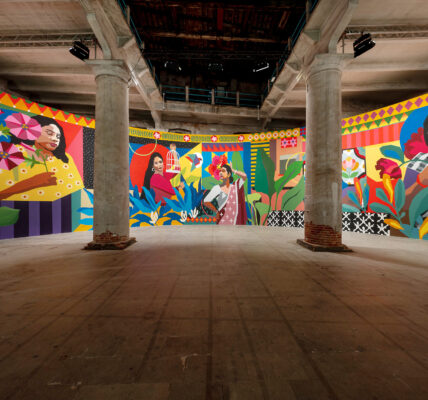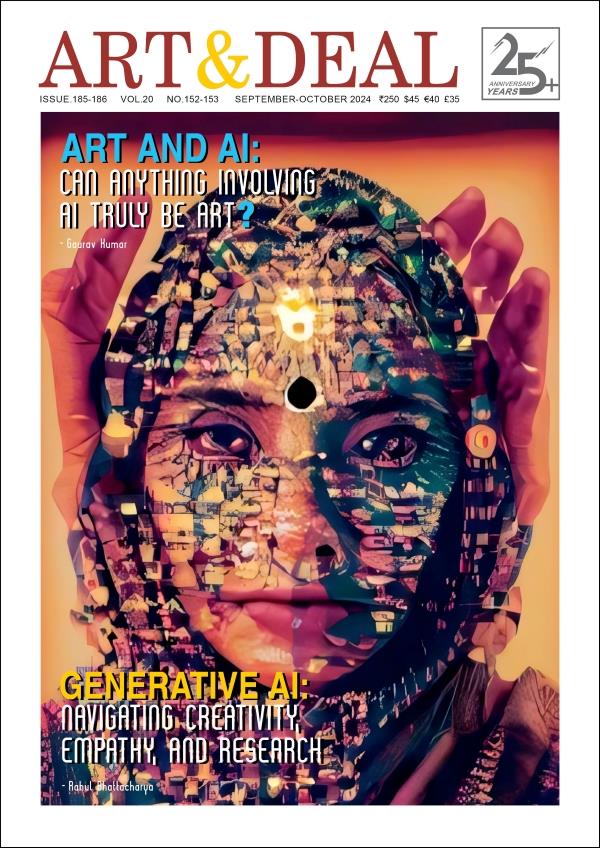The latest solo exhibition of Megha Joshi exhibition titled Rite of Passage was held at Studio Art Gallery (New Delhi). It had an eclectic quality riddled with traditional symbols. For Megha, the element from Hindu rituals along with decorative Islamic motifs is the medium through which she expresses her art. The artist feels that these ‘quasi’ rituals, which have no pre-ascribed meaning and use materials taken out of their original context, invite contemplation on the nature of thought, material and meaning. There is a meditative quality in her repeated use of these elements. This syncretism has been with the artist since childhood. Through installations made from cotton wicks, fabric, rice grain, incense sticks, boards, acrylic and watercolor, she has developed a new aesthetic voice that articulates her ideas on her “no-opinion” concept.
“Rite of Passage, as the name suggests, is a transitional phase in my practice, when I wanted to re-calibrate my thinking. As the pandemic ended, I saw the futility of many previous patterns of thought. To break out of that, I decided to work with a no-opinion approach,” said Megha. The pandemic definitely left a mark on everyone’s thought process. In this exhibition the uncertainty of our existence made the artist question her previous solid views. She feels it is time to rethink them, keep an open mind and not always look for a conclusion, because in life there are none for certain.
The lattice-like structure titled Dwaar and Darwaza evokes images of Mughal doors found in palaces. They tell the secrets behind locked doors of a magnificent era. The artist’s inspiration was one such monument. She maintains that in “Dwaar and Darwaaza the pattern is inspired by the windows of my childhood playground overlooking the Humayun’s tomb. In the installation view, the sheer frames act as layers of memory. I employed paint instead of henna as a syncretic, decorative element. ” Joshi also used medium cotton wicks and acrylic on MDF board plus fabric to create this wonderful piece of work.
Timeless is a quality that is evident in her 108 drawings. Painstakingly the artist created 108 drawings over a period of 216 days. Each free-hand drawing of the abstracted Rudraksha bead has a background of a static Islamic pattern. A grain of rice on each has 108 different emotions that the artist felt on different days. These drawings, each 5x 7 inches are completed with rice grain, watercolor and acrylic on acid-free paper.
Her enigmatic work was the large site-specific installation made of lakhs of incense sticks or agarbattis, constructed through layers, spread over several walls. Making a lot of sense in its chaotic swirls, the sticks have no scent, hence the artist calls them ‘”nonsense sticks” instead of incense. They are like an illusion that instils excitement when viewed.
Perhaps the most laborious works are the thread works. They look woven in appearance but each knot is actually made up of 5-6 simple knots and then stuck onto the canvas. The action of knotting and sticking is also a ritual for the artist.
Born in 1973, trained as a sculptor from the Faculty of Fine Arts, MS University Baroda, India. Megha worked as a set designer and art director for film and television for 10 years when she quit at the peak of her career to return to her fine art practice in 2008. Megha Joshi’s uniqueness lies in her ability to express herself on various subjects, in a vast variety of media. She has worked with conventional materials such as steel, fabric, bronze, rubber and most interestingly, everyday objects and materials used in Hindu ritualism.
Although her works appear to draw on ideas, concepts and narratives from traditional ritual elements, she gives them a contemporary presence. She speaks to hidden history, unwilling to conform to the rituals of religion but exploring the notions of belief. Megha’s thought-provoking solo exhibition displays a meditative nature that has not been achieved by accident; rather it is the result of long contemplation.
Read More>> Please Subscribe our Physical Magazine




